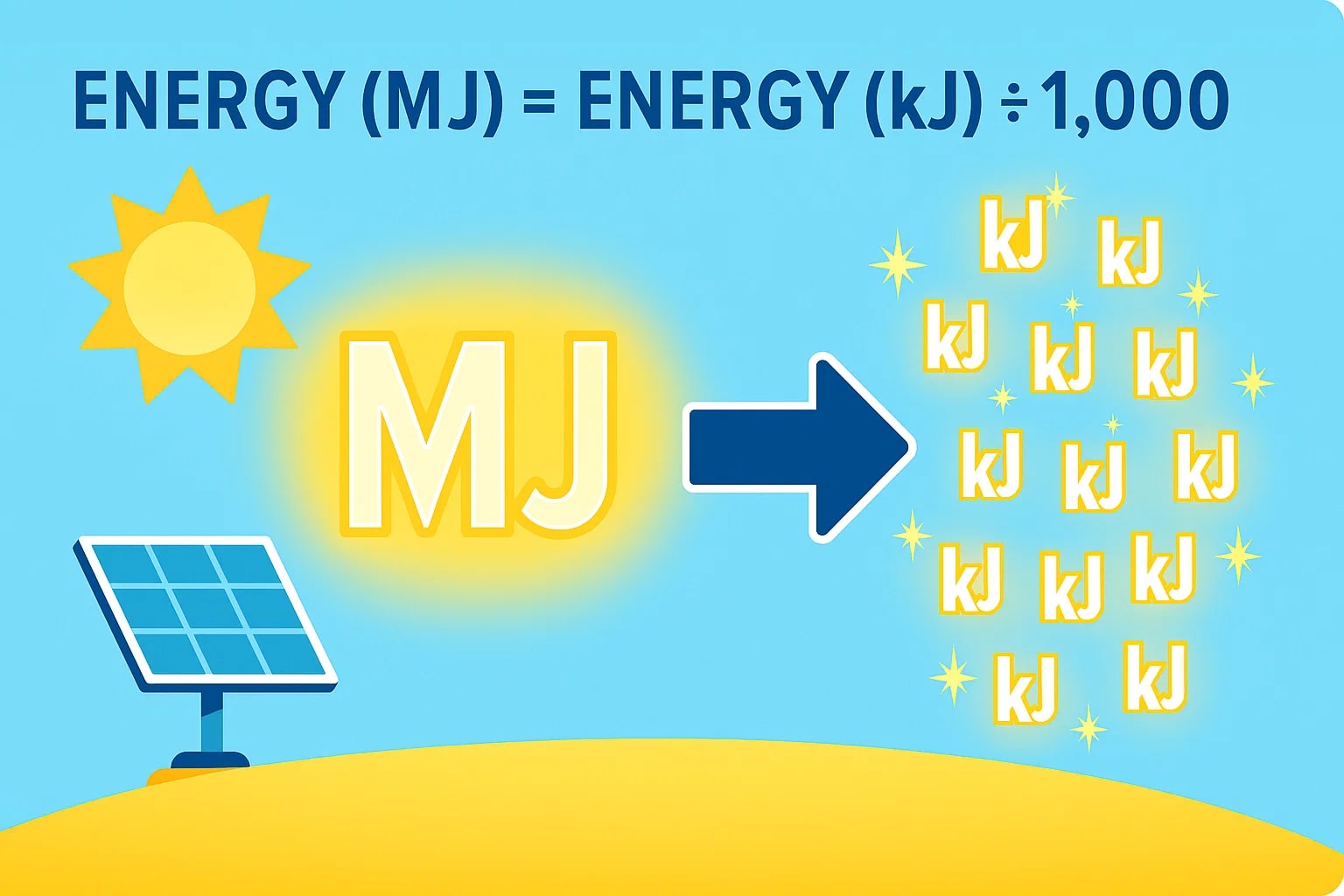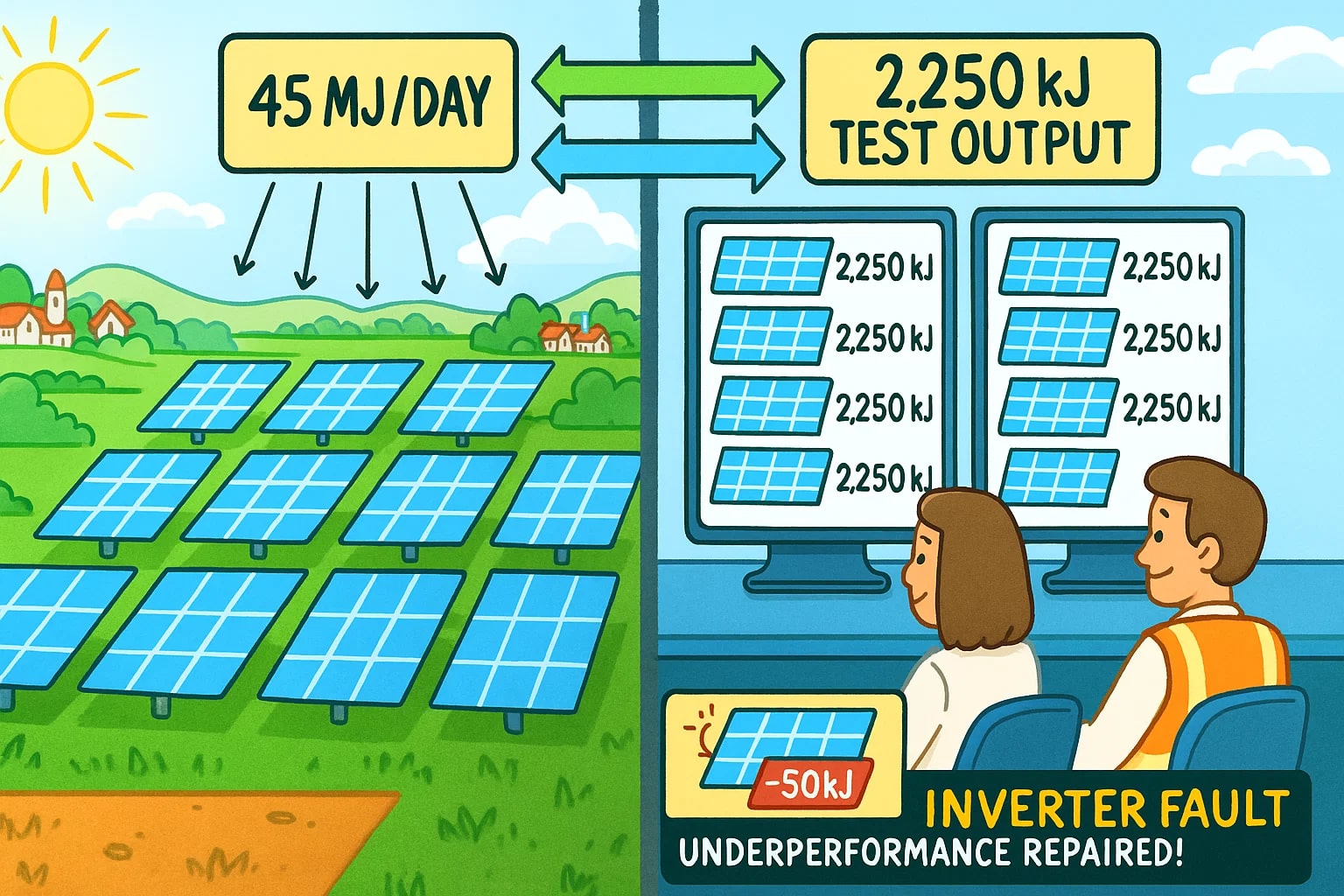megajoules to kilojoules – How to convert MJ to kJ
The conversion from megajoules to kilojoules is one of the most straightforward in the SI system — simply multiply by 1 000. It’s used in engineering, energy management, renewable power generation, and even in large-scale cooking or heating systems.
What is a megajoule?
A megajoule (MJ) is equal to 1 000 000 joules. It’s used for large energy quantities — for example, the total daily output of a solar array, the energy content of fuels, or the consumption of industrial equipment.
Formula:1 MJ = 1 000 kJ = 1 000 000 J
What is a kilojoule?
A kilojoule (kJ) equals 1 000 joules. It’s more commonly used for medium-sized energy measurements, such as food energy values, small machinery energy use, or short-term renewable generation outputs.
Formula:1 kJ = 1 000 J
How to convert megajoules to kilojoules
Since both units are in the SI system, the formula is simple:Energy (kJ) = Energy (MJ) × 1 000
Example: If you have 8.5 MJ, then:Energy = 8.5 × 1 000 = 8 500 kJ
For reverse conversion:Energy (MJ) = Energy (kJ) ÷ 1 000
You can calculate it instantly with our Energy Converter, and for more measurement conversions — from energy to length, area, and more — explore the complete Conversion Tools collection.

Do you know?
-
Megajoule fact: One megajoule is roughly the energy needed to keep a 1 000-watt appliance running for 16–17 minutes.
-
Kilojoule fact: A slice of pizza can contain about 1 000 kJ — equivalent to 1 MJ of energy if you eat an entire pizza with eight slices.
-
Megajoule fact: Large commercial wind turbines can produce 3–5 MJ of energy per second at peak performance.
-
Kilojoule fact: Boiling a kettle of water typically requires around 200–250 kJ, depending on the volume and efficiency.
Powering a Town: The Solar Farm Energy Shift
In a sunny region, a solar farm powers an entire small town. Each day, its array of panels produces about 45 MJ of electricity. For the town’s energy reports, this figure is perfect — it’s big enough to summarize the total daily output without being cluttered by too many digits.
But when the engineers manage maintenance schedules, they break the data into kilojoules for precision. A single row of panels might generate
2 250 kJ in a short test period. In MJ, this would be 2.25 — still correct, but less exact when monitoring small fluctuations.
During one summer, the farm experienced an unexpected dip in performance. The total MJ figure didn’t look alarming, but when broken into kJ data, the team saw that one inverter was underperforming by a consistent 50 kJ per test cycle. That was enough to trigger an inspection, which revealed a minor wiring fault. Once repaired, the farm regained full output, ensuring the town’s energy supply stayed stable.
This example shows why both units matter. MJ provides a clean overview for big-picture planning, while kJ reveals the fine details that can be critical for troubleshooting and optimization.

Energy Units That Fit Every Level
The megajoules to kilojoules conversion is a perfect example of scaling — the energy doesn’t change, but the way it’s expressed can transform how the data is used. MJ is ideal for communicating large totals in reports, presentations, and planning. kJ works best for mid-range or more precise measurements, where each unit difference can affect performance analysis.
By being fluent in both, you can read, interpret, and share energy data with anyone — from a power plant manager to a homeowner checking appliance use. And with a simple × 1 000 or ÷ 1 000, you can move between the two without missing a beat.

